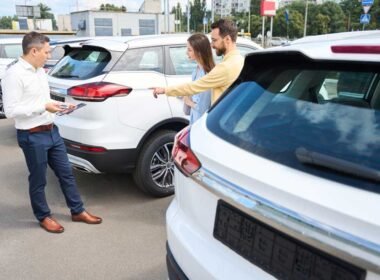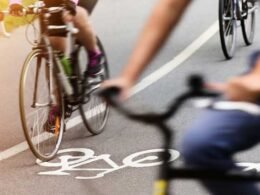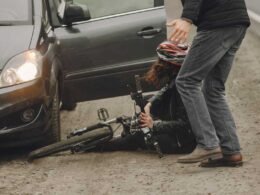Many people wonder about driving barefoot in California. The answer might surprise you – it’s perfectly legal. You can drive without shoes in California and every other state in the US. This common myth leads many drivers to believe they’ll get a ticket for barefoot driving.
Legal doesn’t always mean safe, though. The California Highway Patrol suggests wearing proper shoes for better grip and control. Driving barefoot could put you at risk. Your feet might slip off the pedals or fail to apply enough pressure in emergencies. Some footwear choices can be worse than no shoes at all. Flip-flops, for example, can get stuck under the pedals and cause accidents. This piece will look at the facts about barefoot driving in California, risky footwear choices, and the legal risks if you crash while driving without shoes.
Is it illegal to drive barefoot in California?
Many people believe driving barefoot in California is illegal. This common myth has spread for years, making drivers think they’ll get a ticket for not wearing shoes. The truth? Barefoot driving is legal in all 50 states.
You won’t find any rules against barefoot driving in California’s Vehicle Code. Research proves this point clearly. Back in the 1990s, Jason R. Heimbaugh from the University of Illinois Urbana Champaign asked all fifty states about their barefoot driving laws. His findings showed that no state bans this practice.
The California Highway Patrol says you should wear proper shoes while driving. This advice comes from safety concerns, not legal requirements. Other states like Indiana, Iowa, Missouri, Ohio, and Wyoming share this view – they allow barefoot driving but don’t recommend it.
Legal doesn’t always mean safe. Barefoot driving could create problems under specific conditions. To name just one example, if you crash while driving barefoot, investigators might list this as a factor. This could lead to criminal and civil penalties in certain cases.
The difference between laws and recommendations plays a key role here. No law requires shoes for driving, but courts might see barefoot driving as careless in specific situations. Take someone who drives barefoot, drunk, and speeds – they could face reckless driving charges under California Vehicle Code 23103 VC. This law stops people from driving “a vehicle upon a highway in willful or wanton disregard for the safety of persons or property”.
Barefoot driving might be legal, but safety should guide your choices behind the wheel.
Footwear that can make driving unsafe
Barefoot driving may be legal, but some footwear choices create major safety risks for drivers. Research shows that pedal errors cause about 16,000 road accidents yearly, with many linked to inappropriate footwear.
Flip-flops are the worst offenders when it comes to driving safety. Drivers wearing flip-flops take twice as long to switch between gas and brake pedals. A vehicle going 60 mph needs an extra 11 feet to stop – this could mean the difference between avoiding a crash or not. Nearly half the drivers in research trials missed the brake pedal at least once while wearing flip-flops.
High heels pose another big risk. Your foot’s heel should rest on the vehicle floor to control pedals properly. High heels raise this contact point and make it hard to apply steady pedal pressure. The heel’s narrow tip can get stuck in floor mats or slip under pedals, which might cause accidents.
Platform shoes and wedges make driving just as dangerous by creating a gap between your foot and the pedals. This extra space makes it tough to judge proper pedal pressure, and you might press multiple pedals simultaneously.
Heavy work boots seem safer, but their thick soles reduce your ability to feel the pedals. This lack of sensitivity means drivers might misjudge the pressure to brake or accelerate effectively.
Slippers are nowhere near safe, either. These can easily come off and get stuck under the pedals. Note that any footwear that slips on easily could slip off at the worst moment.
Beyond these examples, unsafe driving footwear usually has these features:
- No secure ankle or heel support
- Thick or platform soles
- Loose straps or construction
- Limited ankle or knee movement
- Poor pedal grip
Whatever the law says, picking the proper driving footwear is vital to road safety. The best options are thin, flexible soles with good grip that stay firmly on your feet.
Legal consequences if an accident happens
Driving barefoot isn’t against the law in California. However, you might face legal issues if you have an accident without shoes. Many drivers don’t realize the problems this could create afterward.
A barefoot-related collision could work against you. Police officers might decide your lack of proper footwear affects your vehicle control. Insurance companies or other parties could use this to prove you were negligent.
California Vehicle Code 23103 might charge you with reckless driving if they find that no shoes lead to “willful or wanton disregard for the safety of persons or property”. These charges come with harsh penalties:
- Fines up to $1,000
- Imprisonment for up to 90 days
- Probation
- Higher insurance premiums
California’s comparative negligence rules mean your compensation could drop based on how much fault you share. Your damages might decrease if barefoot driving played a role in the accident.
Insurance adjusters inspect every detail during accident investigations to reduce payouts. They might argue you weren’t careful enough by driving without shoes, especially if wearing them could have prevented foot injuries.
The courts care most about whether you drove safely. Barefoot driving alone rarely determines who’s at fault. They look at driver negligence, traffic violations, road conditions, and other direct causes of the crash.
You should ask a personal injury attorney for help right after any accident, especially when you have no shoes on. They know how to protect your rights and guide you through legal challenges that might come up because of your footwear choice.
Conclusion
The facts paint a fascinating picture of barefoot driving in California. It sits in a peculiar legal gray area. While the law allows it, drivers should carefully consider the safety risks. This piece highlights how driving without proper footwear can affect your control over the pedals in emergencies. It also shows that some footwear choices – like flip-flops, high heels, and loose slippers – pose more danger than bare feet.
Just because barefoot driving is legal doesn’t mean you’re safe from what it all means. If you get into an accident while driving shoeless, you could face liability problems. Insurance companies might claim your bare feet contributed to negligence and reduce your compensation under California’s comparative negligence principles.
The most crucial evidence points to wearing the right shoes for optimal driving safety. Thin, flexible soles that grip pedals well and stay secured to your feet work best. The law might not prohibit barefoot driving, but safety experts and the California Highway Patrol’s recommendations deserve your attention.
Note that legal doesn’t always mean safe. Your choice of footwear while driving seems small but carries significant safety implications. Here’s a practical tip: keep a pair of good driving shoes in your car if you often need to drive after activities that might leave you barefoot or wearing unsuitable shoes.










